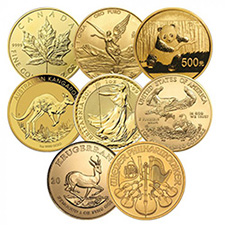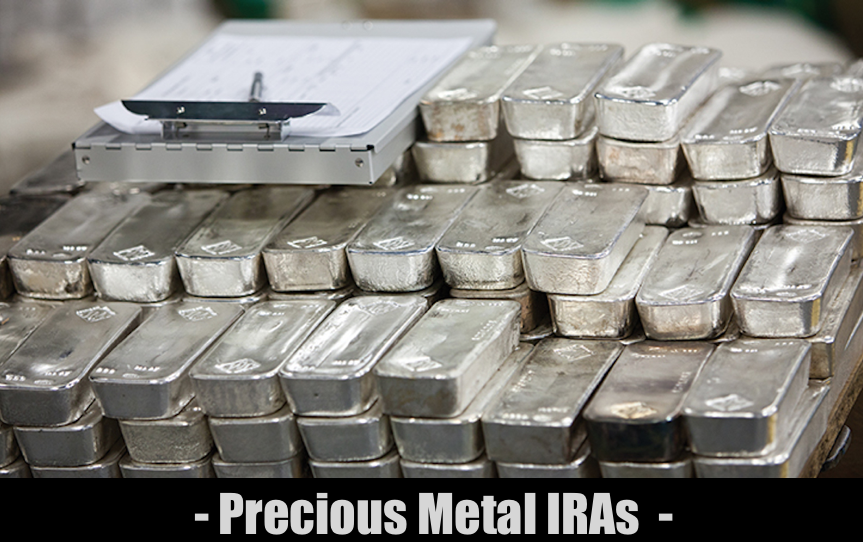Jump To:
What | Investing Options | Best Products? | Coins | Bars | Rounds | IRAs
Key Takeaways
- Investing in precious metals can be a great way to diversify a portfolio;
- Experts suggest that owning physical bullion can also act as a hedge against inflation, as precious metals have always been considered a safe haven during times of economic uncertainty;
- It is possible to invest in the derivatives market with ETFs or futures contracts, but our experience shows that investing in physical bullion poses no default and very little counterparty risks;
- Physical gold is usually the go-to choice of most investors, but other metals, such as silver, platinum, and palladium have seen increased demands lately, especially by new sectors of the industry. Some examples being medicine, photovoltaic, and renewable energy sources overall. Established industries, like electronics and automotive, have a big demand for them as well.
- The most popular ways to invest in physical precious metals are coins, bars, and rounds.
Savvy investors and experts will always keep an eye out for the precious metals market. Physical gold and silver are at the heart of precious metal investments. They have been used as a currency and a commodity for millennia and can be a great store of value for generations. However, there are also other options to choose and diversify one's portfolio and the investment demand is increasing with each passing year.
There are different ways to invest in precious metals. Purchasing and storing physical bullion, investing in a mutual fund, trading an ETF (exchange-traded fund), futures contracts, or even making a direct investment to a mining company (mining stock).
What are precious metals?
A precious metal is a metal for which there is high demand. They are scarce to be found in nature but highly sought-after for industrial use, for different markets, such as jewelry, or as a financial asset.
Many anthropologists and historians believe that precious metals are at the core of the rise of many successful ancient civilizations, such as the Greeks and Romans. Their use as a standardized currency by those societies enabled the funding of armies and castles and facilitated the collection of taxes.
Until only a few decades ago, gold and silver were still the base of many currencies. The countries' economies depended directly on them. That was the case with the gold and silver standard.
Nowadays, with the surge of fiat currencies (not based on any commodity), precious metals are still considered a sensible tangible asset for investment. They tend to perform remarkably well during times of economic crisis and many see them as a safe haven against inflation and fiat currency devaluation.
Ways to Invest in precious metals
There are different ways to invest in the precious metals market. You can make a direct investment by purchasing the physical asset itself, or you can deal in derivatives markets, such as NYMEX, COMEX, or LBMA.
- Bullion
By investing in precious metal bullion, you are investing in a real asset that is default-free and poses virtually no counterparty risks, as long as you choose a reliable precious metals dealer.
A few examples of these products include bullion bars and bullion coins. Gold bullion tends to be the most popular amongst investors, but lately, silver bullion has seen a tremendous increase in demand. The same goes for platinum and palladium. According to experts, they could be a sensible way to diversify your precious metals portfolio.
Physical bullion holds a special place in the asset class. The reason being, unlike other commodities, precious metals won't corrode, expire or die out. Also, it does not require regular maintenance, like real estate, to retain its value. As a matter of fact, precious metal assets historically have held their value in the long haul and performed especially well in a bear market.
- ETFs and Options
A precious metal ETF (exchange-traded fund) and a mutual fund actively trade physical bullion and sell their shares on the stock market based on the spot price of the precious metal they hold. However, their shares tend to fluctuate more than the actual precious metal spot price. Their earnings are, then, split among the stockholders.
It is important to point out that funds pose greater counterparty risks. While the fund manager or custodian holds the precious metal, there are no real guarantees that the stockholders will be able to see their money back in the case of a widespread economic collapse.
Options and futures contracts are agreements for transactions of a certain amount of a given precious metal in a future time. The investment risk is that the prices might not fluctuate in the investor's favor. There are also higher counterparty risks than investing in physical bullion.
- Miner companies
Another option that can translate higher risks than physical bullion. Investing in a mining company (e.g. gold miners) means the investor is susceptible to the company's management and operational risks.
That means that mining stocks are not entirely tied to precious metal spot prices. If the company is poorly managed or if something happens that halts or disrupts their operations, their shares will go down, even if the spot prices of gold and silver, for instance, are going up.
Best Bullion Products to invest in
Our experience shows that investing in physical bullion could be the best option to retain control of your investments without any risks of default or being dependent on somebody else's performance. Owning physical gold, silver, platinum or palladium gives you the guarantee that your assets lie in your hands. It also allows you the opportunity to quickly liquidate if needed.
Here are the most common ways in which to invest in physical bullion:
- Coins

Bullion coins are minted by a sovereign government mint, like the US Mint and the Royal Canadian Mint. They are legal tender inside their country of emission and carry a face value. Nevertheless, they are actually bought and sold in accordance with their bullion content. Bullion coins also have an added value as a collectible item.
For instance: the 1 oz American Gold Eagle coin has a face value of 50 dollars, but it derives its value from the spot price of gold plus the precious metals dealer's premium. The same goes for the Silver Eagles. They carry a face value of $1, but their silver bullion content is worth much more than that, according to the silver spot price.
Many investors consider bullion coins to be the more liquid option among bullion products. That is because they are minted by a national institution, owned by a sovereign government. They are coveted by coin dealers and collectors alike.
Here are a few of the most popular bullion coins:
- American Gold Eagle;
- American Silver Eagle;
- American Gold Buffalos;
- Gold Maple Leafs;
- Silver Maple Leafs;
- South African Gold Krugerrands;
- Silver Britannias.
- Bars

Private mints produce most of the bullion bars in the market, although there are a few national mints that produce them as well. These include the Australian Perth Mint, the Royal Canadian Mint, and the British Royal Mint.
Bullion bars are preferred among investors who are willing to purchase the most bullion content for their money. That stems from the fact that bullion bars typically have lower premiums in comparison to bullion coins.
Some of the most regarded mints that produce bullion bars are:
- PAMP Suisse;
- Valcambi Suisse;
- Royal Canadian Mint;
- Scottsdale Mint;
- Sunshine Mint;
- Rounds

Rounds are bullion that is shaped like coins but have no legal tender or face value. They are minted by private mints with a variety of designs. Some mints make unique designs for their rounds, whereas some can even recreate the designs of important historical coins.
Much like bars, rounds carry lower premiums in comparison to coins while still retaining good liquidity.
Here are a few of the most popular mints among our customers:
- SilverTowne;
- Sunshine Mint;
- Scottsdale Mint.
Precious Metals IRAs
Physical precious metals can also be used as a way to fund a self-directed IRA. An IRA custodian (or trustee) will hold and store the physical bullion. That way, any gains from reselling your bullion coins or bullion bars, will remain tax-free, as long as you keep your earnings in your IRA.
Look for the IRA Approved mark on each product's page to check if you can use it to fund your retirement account.
If you are considering opening a self-directed IRA, make sure to check our Precious Metals IRA page for more information and contact our staff at 1-800-294-8732 for further help.
















